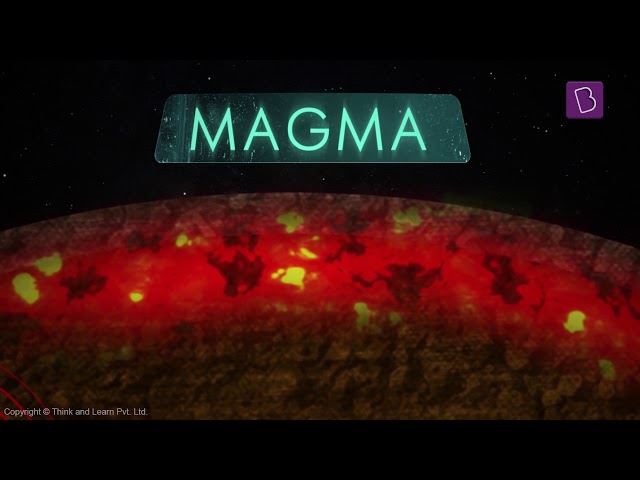Earth comprises four separate layers. Geologists believe that as the Earth cooled, the heavier and denser material sank into the centre, and the lighter ones rose towards the top. Due to this, the outermost layer is made of the lightest materials, such as rocks and granites, and the innermost layer consists of nickel and iron. Let’s discuss the different layers of the earth.
Different Layers of the Earth

The Inner Core
It is the centre and the hottest layer of the Earth. The inner core is solid and made up of iron and nickel with temperatures up to 5,500oC. Due to its immense heat energy, the inner core is more like the engine room of the Earth.
The Outer Core
The outer core of the Earth is similar to a very hot ball of metals, whose temperature is around 4000 oF to 90000F. It is so hot that the metals inside are all liquid. The outer core is around 1800 miles under the crust and is approximately 1400 miles thick. It is composed of metals such as iron and nickel. The outer core surrounds the inner core.
The inner core has pressures and temperatures so high that the metals are squeezed together and not able to move like a liquid but are forced to vibrate instead of solid.
Mantle
Mantle is the widest section of the Earth. Its thickness is approximately 2,900 km. The mantle is mainly made up of semi-molten rock known as magma. The rock is hard in the upper part of the mantle, but lower down the rock is softer and begins to melt.
The mantle is located directly under the Sima. The mantle consists of very hot and dense rock. This layer of rock flows like asphalt under heavy weight. This flow is because of the greatest temperature differences from the bottom to the top of the mantle. The reason behind the plates of the Earth moving is the movement of the mantle. Its temperature varies between 1600 oF at the upper part to 4000 oF near the bottom.
Crust
The crust is the outer layer where we live. The thickness is around 0-60 km. It’s a solid rock layer divided into two types:
- Continental crust covers the land and,
- Oceanic crust covers water
The crust is the most widely studied and understood. The mantle is hotter and capable of flowing. The outer and inner core is much hotter with great pressures that you can squeeze into a ball smaller than marble if you are able to go to the centre of the Earth.
Frequently Asked Questions – FAQs
Name the different layers of the Earth.
Which is the centre and the hottest layer of the Earth?
The Outer Core is composed of which Metals?
What is the temperature of the Outer Core of the Earth?
Which is the widest section of the Earth, and what is its thickness?
Watch this video on layers of the earth with engaging animations and understand the composition of each of these layers better

Stay tuned to BYJU’S and Fall in Love with Learning!

very good summary thank you.
it is a very good video for children to understand the layer of earth
Thank you soo much it helped me in my research work for the school
Thank you soo much it helped me in my research work for the school
Thank you soo much it helped me in my research work for the school homework.
THANK U LOT IT IS VERY GOOD AND MY EXAM WENT VERY GOOD
A good summary to understand the layers of earth in a short time and learn it. It helped me a lot. So thank you byju’s.
It is so and so very useful
Very good summary it helps me in preparing my notes thank u so much
Thank you so much it helped me for my daughter school work.
Good Explanation. Thank you very much.
This is good. Thank you!
Thank u